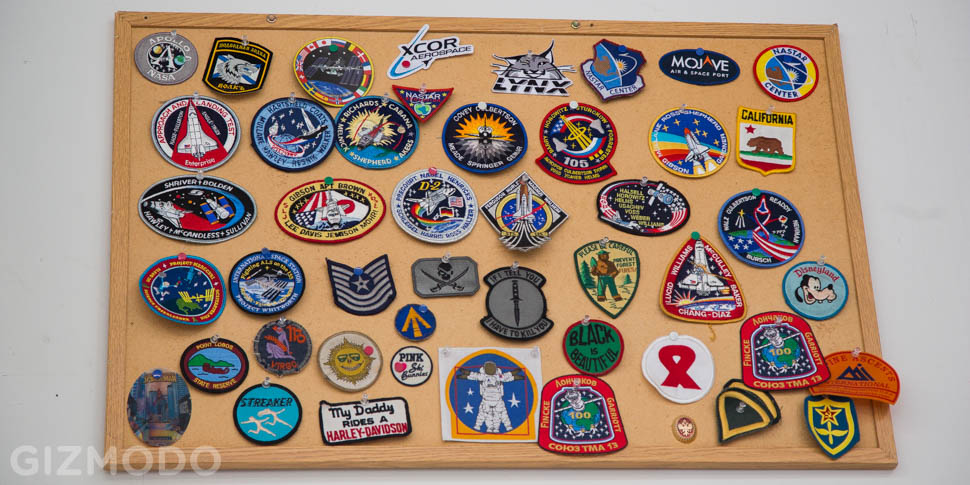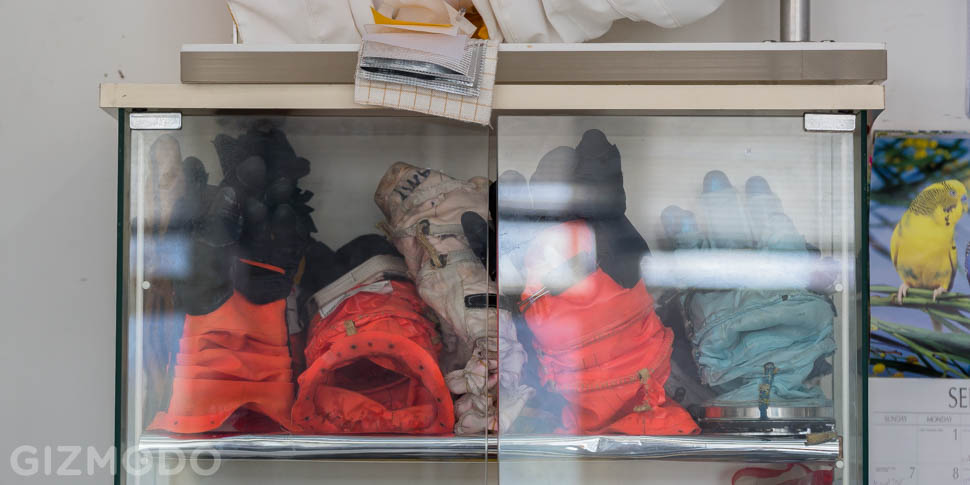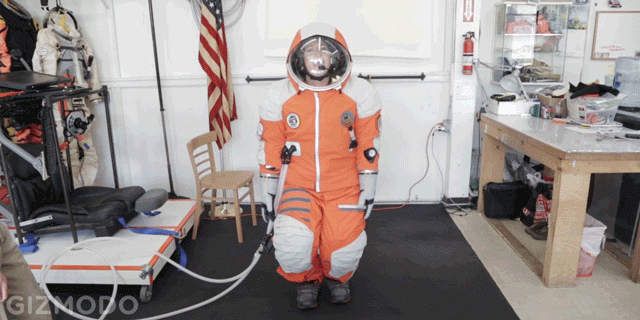If you want to experience what it’s like to wear a real-life spacesuit, you can go to one of two places: Russia or Brooklyn. (Or, you know, space.) We took the easy route and recently paid a visit to Final Frontier Design in the Brooklyn Navy yard to try on the outfit of an astronaut.
Final Frontier isn’t creating spacesuits just for kicks. They’re the real deal, and they have a NASA certification to say so, company president Ted Southern told me. “We just signed a Space Act Agreement with NASA at the Johnson Space Center for orbital flight certification of our suit,” he told me.
FFD was just tapped by Waypoint 2, a space training firm, to incorporate their suits into Waypoint’s programs. But the company could be contracted to make a suit ready to go to space for anyone from SpaceX to Boeing to Virgin Galactic and beyond. While these firms are gunning to figure out the future of space travel, FFD’s MO is building what to wear on the trip. And so far, so good.
The suit is an Intra Vehicular Activity suit, or IVA, meaning it’s intended for use inside a spaceship, during launch and re-entry, and everything in between that happens inside the vessel. As space travel becomes a civilian affair, IVAs are going to be just as essential to commercial spaceflight companies as seat belts are to airlines. FFD’s suit is up to snuff with NASA’s standards, and it’s improved upon earlier generations of suits. The latest design has a single pressure layer, made with a hybrid of high-strength materials and low-torque mobility joins to give space explorers a larger range of motion. It’s laser cut rather than handmade, with the ability to sustain a higher operating pressure, and it has better gloves and a carbon fibre waist ring as well.
“We feel that it’s a next generation suit. It’s lighter weight, less expensive, easier to size, and easier to move in than current spacesuits,” said Southern. “But we also kind of recognise that there’s never been and probably won’t really be in the short term, a huge market for spacesuits.”
Meaning, FFD has two other side hustles: one, creating spinoff technologies (more on that in a bit), and two, letting people pay $US345 to test drive a bonafide spacesuit. I decided to give it a spin.
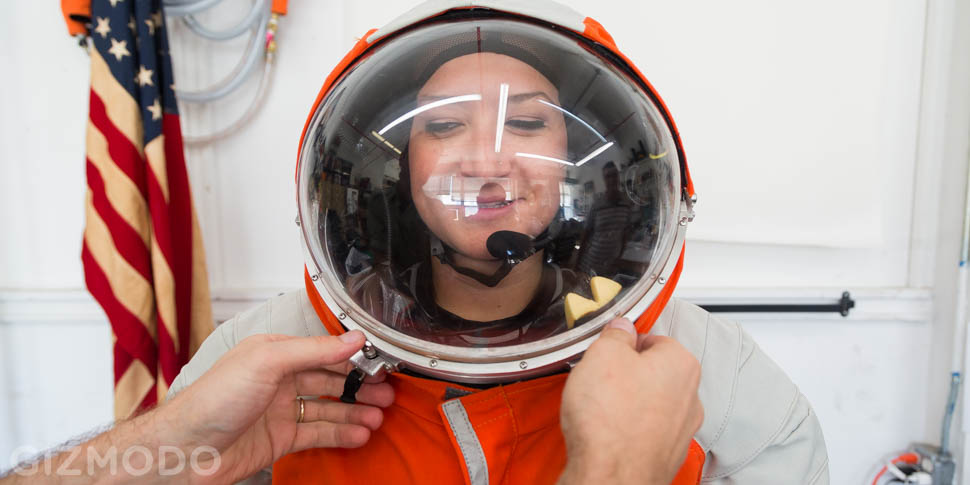
First up, you have to get the legal crap out of the way, because this is America, goddamnit. Before I could try on the spacesuit, I had to sign a number of documents. The first absolved FFD of any risk should their spacesuit maul me in some freak accident situation (can happily report that it didn’t).
The second was the technology control plan. Since FFD is a part of International Traffic in Arms or ITAR — a group of laws that govern and control the flow of defence-related materials and intel across U.S. borders — I had to basically agree I won’t sell any secrets to other countries, and confirm that I was indeed a U.S. citizen. Gizmodo photographer Nick Stango and I also agreed we wouldn’t take any photos of me taking off or putting on the suit, because apparently therein lie a few American trade secrets.
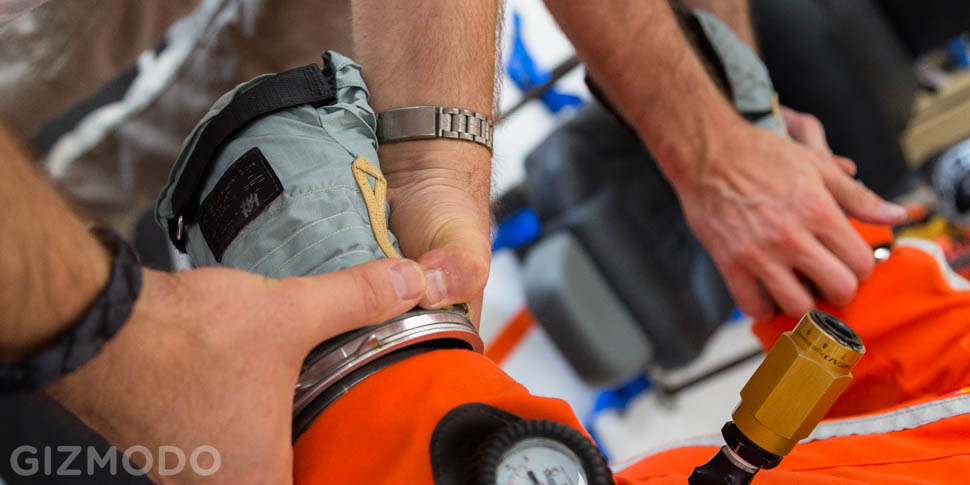
Then came the actual experience. First I tried out the gloves; FFD makes specialised, pressurised, space-friendly pairs. I tried on two gloves — a conventional spacesuit glove for a frame of reference, and the next-gen fancy Final Frontier glove. The latter is lighter and affords you a much-needed full range of motion (though I still couldn’t solve a Rubix cube inside a pressurised container with the glove on). That was sort of the intro to the full suit experience, which came next.
It started with stripping down and putting on a base layer of leggings and a long-sleeved shirt. I felt like I was getting ready to hit the slopes. At this point I began to sweat, but I had no idea how hot it would get when I put on the actual suit. When you put on a pair of tight jeans, you have to do a wiggly jump dance to get your pants all the way up. Putting on a spacesuit was like that except it’s impossible to hulk the thing on without help. The FFD suit may be lighter and thinner than the norm, but I still needed plenty of assistance from Southern’s partner Nikolay Moiseev, an engineer from Russia with 20 years experience of crafting spacesuits under his belt.
Moiseev, for the record, has been working in the space industry since the mid-80s. Before coming to Brooklyn, he worked with the Russian spacesuit maker Zvezda. He can boast the fact that he is one of the few engineers in the world to have worked on all the spacesuit designs currently in service. He linked up with Southern when the two were competing against one another in NASA competition to create a next-gen glove several years ago. Neither of their designs won, but Southern gave Moiseev a lift back to New York when the competition ended, and in that car ride, the idea to build a spacesuit for the future was born.
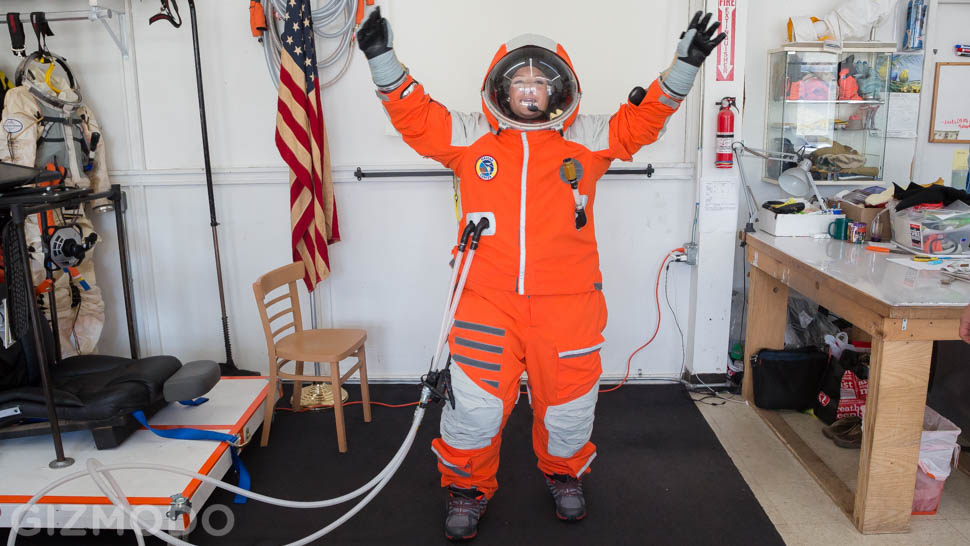
Impressively, the orange suit could fit my 5-foot-4-inch frame as well as that of someone up to a whole foot taller. No matter your size, the suit is heavy and bulky — but not entirely unwieldy — even before it’s pressurised. Makes sense though; it takes a lot of material to keep humans safe from space’s inhospitable atmosphere.
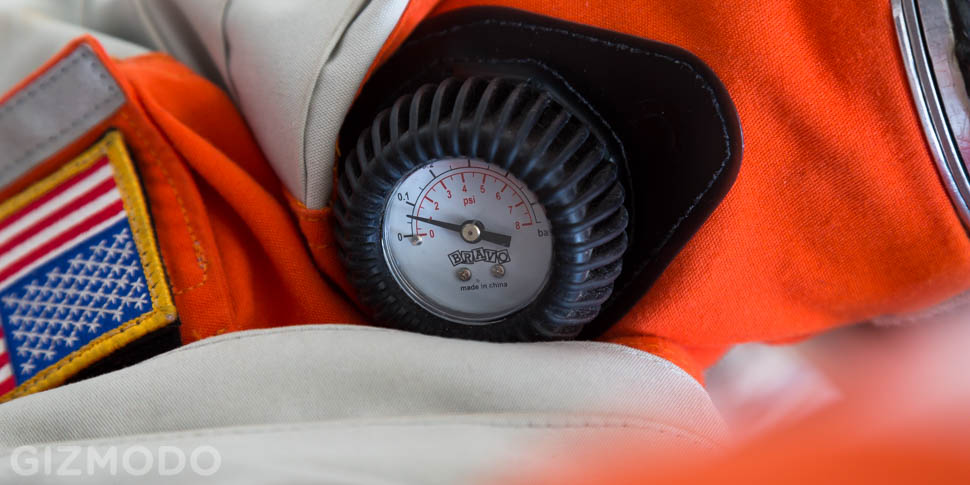
Once the suit was on, the team gave me a coms cap so I could hear them talking to me over the sound of the ventilator and pressure system attached to the suit. They screwed the gloves onto my hands, and I pulled the helmet over my head. Then the pressure was on, and that is not a euphemism. I was in a pressurised suit, as if I were actually en route to the ISS.
From there I could adjust the pressure with a gauge on my left arm. The second I flipped the switch, my ears popped. And from the second the pressure began to rise, moving got harder and harder. My arms felt weighted down. I could do jumping jacks, but much more slowly and with more difficulty than usual. I could do a couple of pushups (I gotta be honest, I only did three), but I needed help to get up and down from the ground. I can’t even imagine what would have happened if I had fallen, but I would probably have emerged with a lot more compassion for turtles and the elderly.
I also tried out some basic maneuvers like clipping and unclipping a carabiner onto a handle to simulate what it would be like to do the kinds of things astronauts do in space. It was all hard! And I still had gravity on my side. It really stuck with me how physical going to space must be. I felt like the Stay Puft marshmallow man.
Also I was sweating. I was sweating a whole lot.
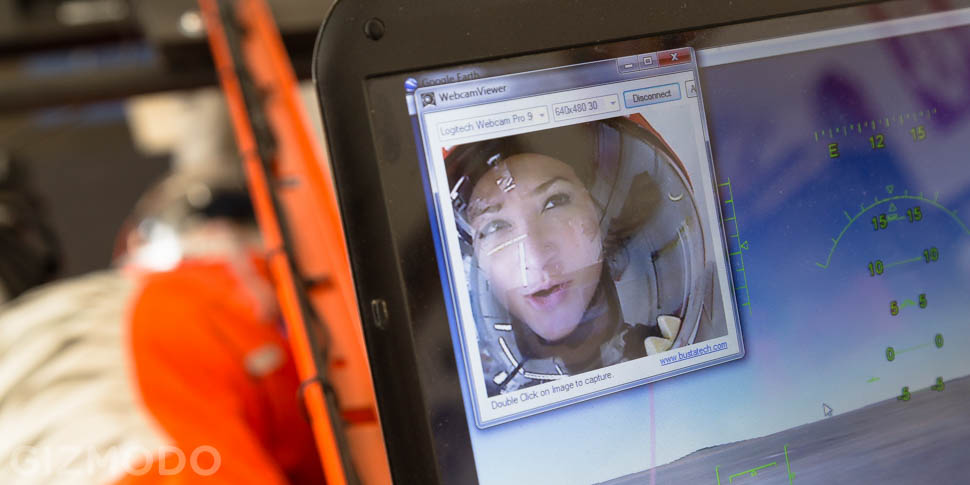

After spending a little time walking around in the suit, they let me experience a flight simulation. Here’s some intel: I am a terrible pilot. I crashed my spaceship (read: Google Earth simulator) into Mount Kilimanjaro no less than four times. But again, it stuck with me how hard it was to perform basic tasks in this suit. Bear in mind that the tasks I was trying to complete were 100 per cent simpler than the types of work astronauts actually have to do on space. Even getting into the simulator — basically a chair laid on its back, affixed on a homemade wooden rig, with a seatbelt, joystick and monitor — required assistance.
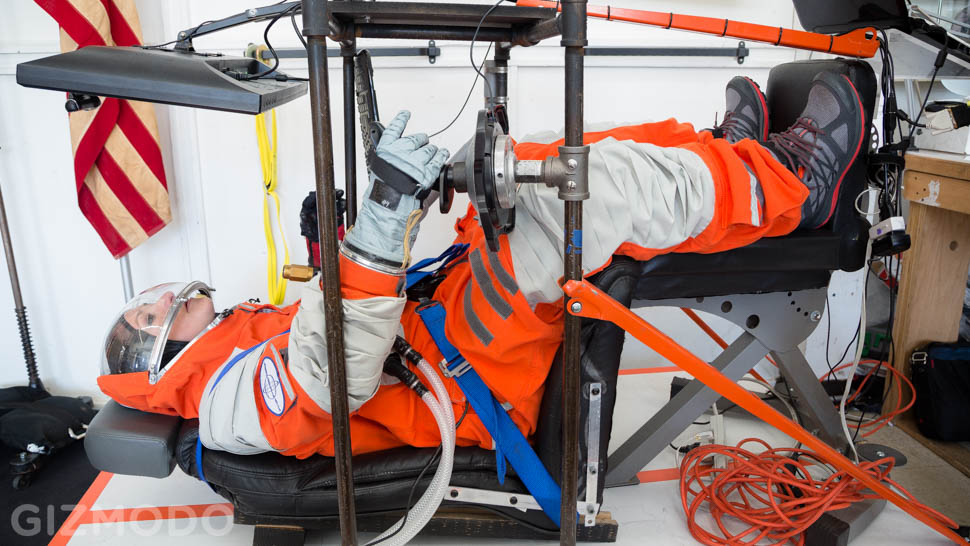
For now it’s just a fun experience that FFD is offering up to armchair space enthusiasts (and bloggers) who want to get a little closer to celestial experience. Most people are never going to actually go to space, even though many folks have already put down hundreds of thousands of dollars in deposits for Virgin Galactic trips that haven’t even blasted off yet. But you can throw down a couple hundred dollars to give it a go at FFD’s workshop, or pay several thousand dollars to go to Russia for a similar experience. Up to you!
FFD is doing important work beyond its spacesuits attraction; projects that actually have real-world applications right now. The team told me the industry-wide demand for space suits is very low. They anticipate it rising with impending commercial trips to space, but in the meantime, in addition to their suits, the Brooklyn crew is making things like medical compression pants and gloves for firemen.
“We’re interested in using technologies for space and having some spinoff applications,” Southern said. “Firemen’s gloves make a lot of sense in that realm. There’s a lot of thermal fluctuation in space. And medical compression pants. We’ve made these passive compression pants that are good for high-G loading. So in a suborbital flight, Virgin Galactic i think they expose you to 6 G’s, and what they do is they keep the blood essentially out of your legs and in your upper body so you don’t pass out. But it’s also useful for people who have medical conditions like orthostatic intolerance. It’s also good for something called coach class syndrome where you can develop blood clots in your legs.”
Medical applications are great. Helping people is great. And for those of us who can’t afford to throw down a quarter of a million dollars to secure a spot to go to space with Virgin Galactic, here’s a way to experience what it’s like to be Buzz Aldrin, just for a little bit. And it’s pretty awesome.
